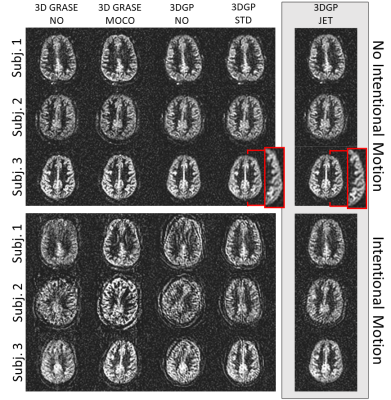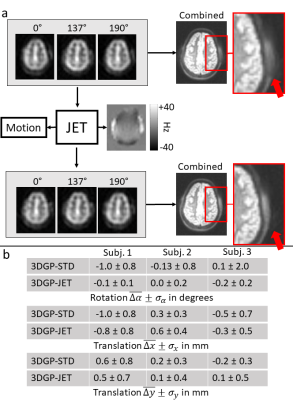Jörn Huber1, Daniel Hoinkiss1, and Matthias Günther1,2
1Fraunhofer MEVIS, Bremen, Germany, 2University of Bremen, Bremen, Germany
1Fraunhofer MEVIS, Bremen, Germany, 2University of Bremen, Bremen, Germany
Arterial Spin Labeling (ASL) yields functional information about the brain without exogenous contrast agents but ASL is sensitive to subject motion. In this work, a novel reconstruction for 3D GRASE PROPELLER ASL is presented, which jointly estimates motion and geometric distortion.

Figure 3: Reconstructed perfusion-weighted images with intentional motion and without intentional motion. The acquisition technique is indicated by 3D GRASE/3DGP and reconstruction without motion correction (NO), 3D GRASE three-dimensional rigid body motion correction (MOCO), standard PROPELLER motion correction (STD) and the proposed joint estimation of motion and distortion (JET) is applied. Note that in contrast to the original 3DGP method, a single motion estimate is calculated for each brick instead of the slice-by-slice approach to increase the robustness.

Figure 4: a.) Procedure of 3DGP-JET. All bricks (three out of twenty control bricks from the third subject shown here) are used to estimate the underlying distortion field and individual motion parameters (Eq. 3). The distoriton field is then used to compensate distortion in individual bricks by unwarping with interpolated inverse field maps. Arrows indicate areas with large off-resonances and visible distortion in uncorrected 3DGP images; and b.) Mean and standard deviation of calculated motion parameters for the datasets without intentional motion using 3DGP-JET and 3DGP-STD.